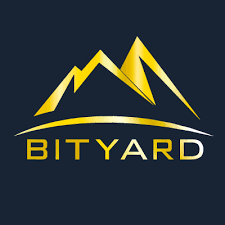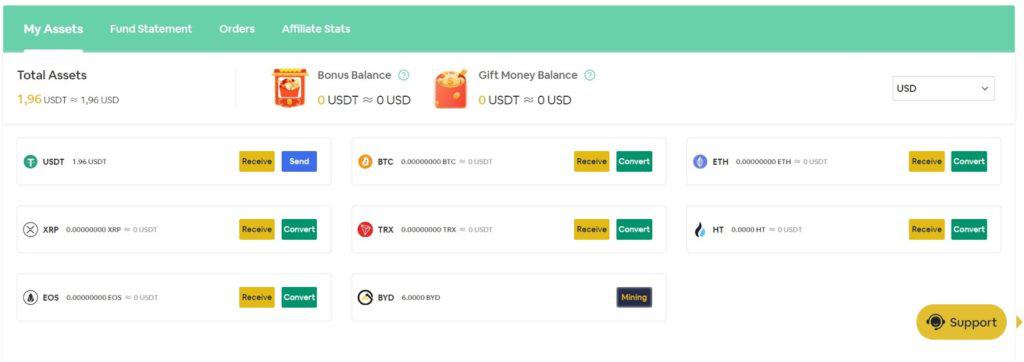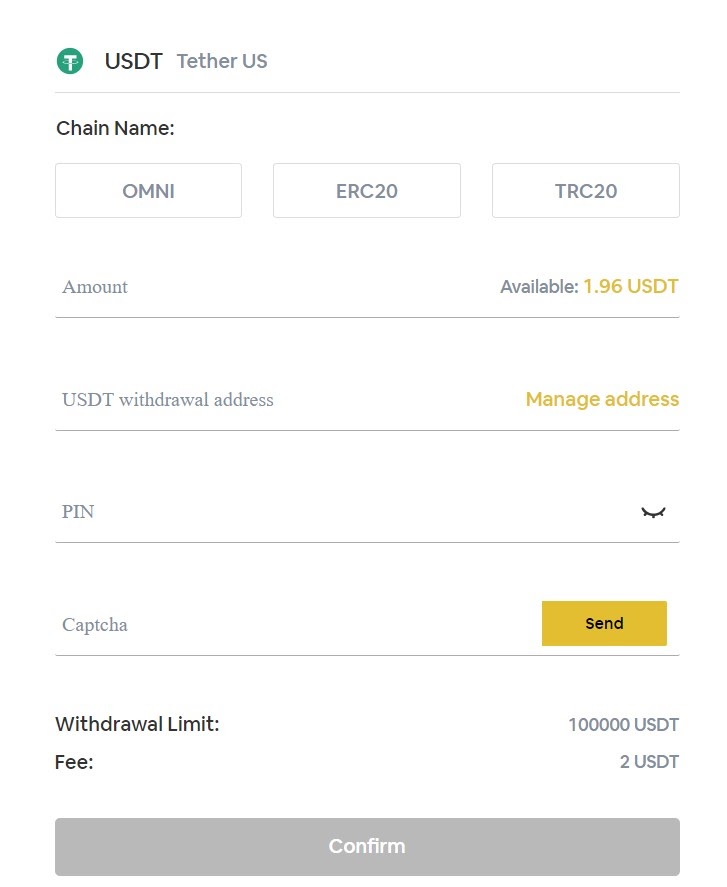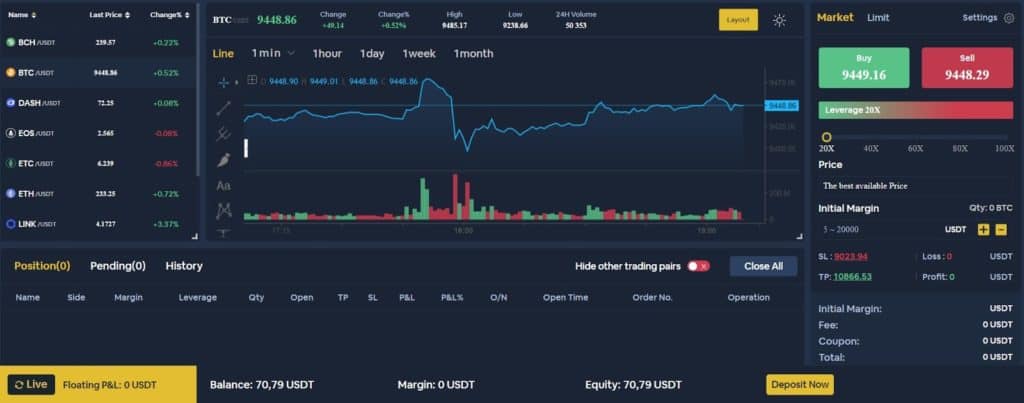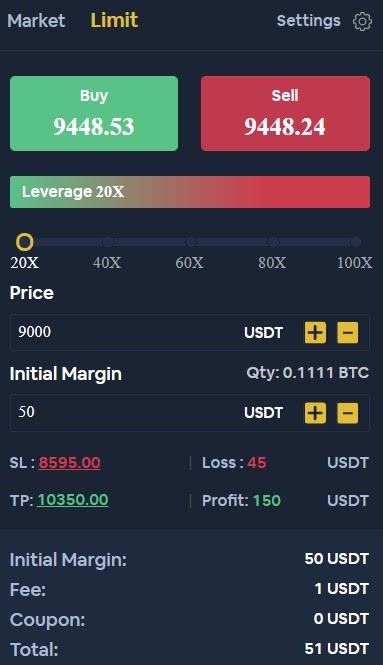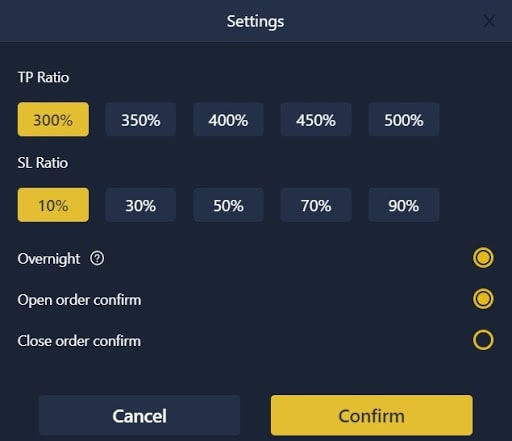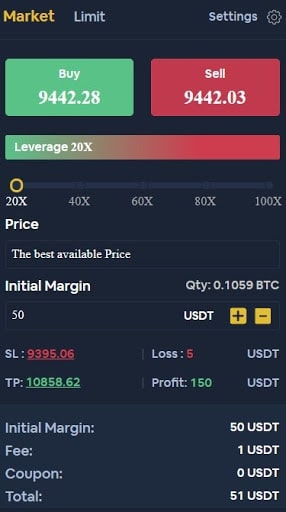Bityard is a cryptocurrency derivatives exchange that’s headquartered in Singapore, according to its official website. It accepts traders from more than 150 countries and claims to provide fast and secure cryptocurrency trading services.It’s important to note that Bityard is an exchange that operates entirely with derivatives. As such, there are no Bitcoin spot trading pairs.Traders can buy or sell cryptocurrencies using margin and with high leverage of up to 100x.Bityard Security 8.5 Coin Variety 8.7 Liquidity 8.5 Before we start, please keep in mind that trading with high leverage is very risky. While it can increase your earnings, it can also lead to a loss of your entire capital a lot quicker than regular spot trading. It’s recommended for experienced traders with sufficient
Topics:
George Georgiev considers the following as important: Editorials, Guides, Margin Trading Exchange
This could be interesting, too:
Guest Author writes Real World Assets: an Emerging Reality in an Inevitable Future
Jose Oramas writes What Is The Open Network (TON): All You Need to Know in 2024
Guest Author writes Quantum Leap: Quantum and AI Will Make Hackers More Powerful Than Ever (Op-Ed)
Jose Oramas writes CryptoPotato Profiles: Who is Pavel Durov, the Man Behind Telegram
Bityard is a cryptocurrency derivatives exchange that’s headquartered in Singapore, according to its official website. It accepts traders from more than 150 countries and claims to provide fast and secure cryptocurrency trading services.
It’s important to note that Bityard is an exchange that operates entirely with derivatives. As such, there are no Bitcoin spot trading pairs.
Traders can buy or sell cryptocurrencies using margin and with high leverage of up to 100x.
Before we start, please keep in mind that trading with high leverage is very risky. While it can increase your earnings, it can also lead to a loss of your entire capital a lot quicker than regular spot trading. It’s recommended for experienced traders with sufficient knowledge of market dynamics. Always trade amounts you can afford to lose.
What trading pairs are available on Bityard?
At the time of this review, there are currently ten cryptocurrencies that you can trade on Bityard, including BTC, ETH, LTC, XRP, BCH, ETC, EOS, TRX, DASH, and LINK.
As most derivatives exchanges, Bityard allows you to open both long and short positions, hence giving you the opportunity to profit regardless of whether the price goes up or down.
How to Register a new account on Bityard
Registering an account on Bityard is very easy. When you hop on the website, on the right side, you will find a fill-in box where you have to enter your email and create your designated password. After that, you will receive a confirmation email, and upon doing it, your account will be activated.
Now, according to the platform, there are a few more security measures that you have to take to be able to withdraw funds. These are:
- Dedicated PIN to verify withdrawals
- Email verification required to withdraw (done automatically when you register)
- SMS Authentication
Side note: It’s worth noting that we tried to withdraw, and we succeeded without any problems, before setting up the SMS Authentication step.
There’s also a KYC verification option. According to Bityard’s support team, the KYC process is only needed if you plan to deposit using fiat currencies, and it’s not required for withdrawals. We can confirm that our account is not KYC-verified, and we withdrew successfully.
Deposit and Withdraw
On the top navigation menu, you will see the “Assets” button. When you go to “My Assets” page, that’s what you will get:
This is where you deposit and withdraw your funds. To deposit, simply click “Receive” and use the address that’s provided in the subsequent pop-up window.
On Bityard, to withdraw, you will first have to convert the asset to USDT. This is done by clicking the “Convert” button next to each asset.
If you want to withdraw USDT, you would have to click on “Send.”
Now, you’d have to select the network of the receiving address – OMNI, ERC20, or TRC20, input the amount, the address, your PIN and complete the captcha to prove you aren’t a bot. Confirm the transaction, and you’re done.
How to Trade on Bityard?
The overall trading interface on Bityard is somewhat simplified, and it features some functionalities that are not present on some of the other exchanges. This is how the main trading display looks like:
On the left side, there are all the available trading pairs, and in the middle, there’s a simple price chart. On the right, you can find the orders, and below is where you can see the opened positions.
There are two types of orders on Bityard, but there’s an embedded functionality to put a Stop Loss or a Take Profit with each order.
Limit Orders
Limit orders are used to open a position at a price that is different than the current market price.
For example, if BTC currently trades at around $9,500, but you want to buy only when it drops to $9,000, you would have to place a limit order to buy at $9,000, and it will be filled only when the price drops to that level.
As shown in the screenshot above, you only have to input the price that you want to buy at ($9,000), adjust the leverage (we’ve used 20x leverage), and the amount of USDT you want to use as margin. The exchange calculates the exact amount of BTC you’d be able to buy with this and creates your order.
Market Orders
Market orders are the simplest ones as they are executed immediately with the best available market price, hence the name.
All you have to do is input the margin that you’d like to work with, and it will automatically calculate your position size, taking into account the leverage you use.
In this example, we’ve decided to open a position using $50 as a margin and a 20x leverage. The exchange calculates precisely how much BTC the position will be – in this case, 0.1058 BTC.
Using Stop Loss and Take Profit Ratios
With each order, users are also able to set Take Profit and Stop Loss orders before opening the position.
The levels are displayed under the “Initial Margin” tab and from the settings button on top you can adjust them:
This way, once your position is opened, it automatically has a stop loss and a take profit in place, making it less risky. Besides, Bityard has a very cool and unique feature, having the option to set Take Profit (TP) and Stoploss (SL) ratio.
Opening a New Position
Now, let’s open a position using a market order.
For this, we’ve decided to use 20x leverage and put 50 USDT as margin. For the Stop Loss and Take Profit setting, we’ve gone with a 10% risk (Stop-Loss) and 300% Take Profit. In other words, if the price drops to $9395.06 – we will be stopped out of our position, and if it goes up to 10858.62, we will realize profits.
The only thing that’s left to do is to hit the “buy” button, and our position will be opened and displayed below the chart.
Closing a Position
Once your position is opened, this is how it looks like:
This is where you monitor the performance of your position and check stats such as opening price, profit, and loss (in USDT or percentages), the time you opened your position, and so forth.
To close your position, you have two options – either let it hit your Stop Loss or Take Profit, or close it instantly by hitting the “close” button – this will close it using the current market price.
The “settings” button allows you to change your Stop Loss and Take Profit targets.
Bityard Trading Fees
Another crucial thing to consider when choosing a cryptocurrency derivatives trading exchange is how much it would charge you for opening and closing positions – the fees.
According to the official website, Bityard doesn’t differentiate between market makers and takers. Instead, it has an “Opening fee” and a “Closing fee” that’s the same.
The formula to calculate it is Margin x Leverage x 0.05%. In other words, the exchange charges you 0.05% based on your actual position size.
For example, if you use a $50 USDT margin with 20x leverage, the fee would be 50 x 20 x 0.05, which is $0.5. However, the exchange pre-deducts the fees in advance, meaning that when you open the position, you will also be charged for the closing fee.
Compared to other exchanges, the fees are somewhat higher. Most competitors have different trading tiers where users can receive certain discounts, and even without them, a flat 0.05% fee on all transactions looks rather high.
Bityard’s Customer Support
The customer support of Bityard is responsive, at least on their official Telegram Channel. We ran a test, asking a technical question and they got back to us within a few minutes.
Apart from that, there’s a Frequently Asked Questions section that also addresses the most common queries.
Conclusion
All in all, Bityard seems like most of the new cryptocurrency derivatives exchanges, but it does have some interesting features, such as the ability to set preliminary targets.
However, in our experience, while we were testing the exchange, there was a strange problem where the software didn’t show any trading values or charts. It took the support team a couple of hours to resolve it, but it’s unclear what might have happened if we had an open position, and the price dropped.
The trading fees are a bit higher, and they are flat – a practice that’s not very common for most of the reliable exchanges. On the other hand, the software is straightforward to use and friendly toward beginners, which is undoubtedly a plus.

